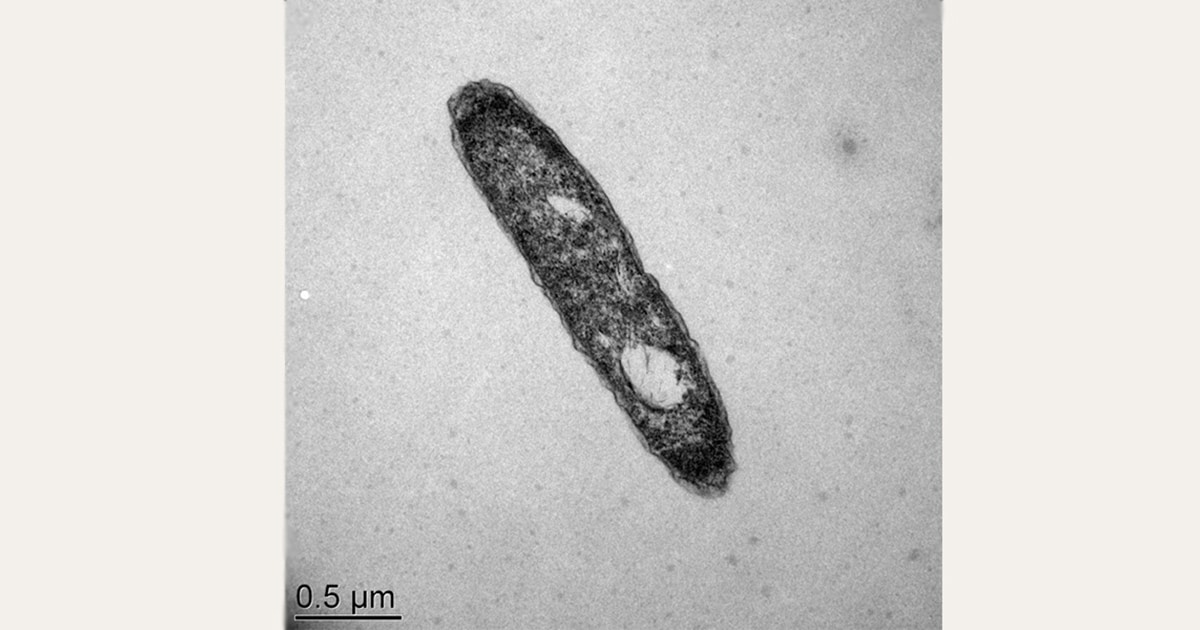Microbes are organisms so small, that you can’t see them with the naked eye. Many types of microbes consist of only one cell: think of bacteria that can cause an infection, but also the microbes that live in your gut and keep you healthy. Every microbe has a membrane that functions as a kind of ‘skin’. The membrane provides the microbial cell’s structure, protects its interior and regulates which substances enter and leave the cell. This membrane usually consists of phospholipids: ‘tails’ of fatty acids with a ‘head group’ containing the element phosphorus (see image). So, phosphorus is essential for building the membrane of every cell. It also plays a major role as a component of DNA and in the energy management of cells.
Living Without Phosphorus
But what if a microbe lives in an environment where almost no phosphorus is present? A team of researchers from NIOZ, University of Lyon, University of Pau and Pays de l’Adour looked into the marine bacterium Desulfatibacillum alkenivorans. They exposed this bacterium species to a wide variety of conditions, including shortages of nutrients such as phosphorus or nitrogen, as well as changes in temperature and acidity and salinity. They then analyzed what happened to the bacterium’s lipid membrane.
Working like a Complex Factory
To their surprise, in the near absence of phosphorus the bacterium was found to replace almost all the phospholipids in its membrane with novel lipids containing sulfur and nitrogen, elements which were available. “Apparently, this microbe is capable of adjusting the chemical composition of the cell’s membrane, so it can save the scarce phosphorus for even more essential cell ingredients such as DNA,” explained NIOZ Principal Researcher Su Ding. “This change from phospholipids to sulfur and nitrogen lipids requires a huge coordinated adjustment of the whole cell system,” adds Jaap Sinnighe Damsté, supervisor of the research project. “It shows that such tiny microbes are actually working as a very complex factory.”
Adjusting Lipids to Temperature
Ding and his colleagues also saw that a change in temperature caused the bacterium to change the composition of its lipid membrane. “This means that this bacterium found an entirely new way to adapt to difficult conditions,” says Ding. This is relevant information: ocean warming and human activity—such as fish farms—can cause surpluses or shortages of nutrients. “Understanding better how bacteria adapt to these situations, can help us with strategies to counteract their unwanted effects on marine life. And by extension, also protect people and societies that depend on the sea for their livelihoods.”
Unique Technology
The research team used a unique technique to analyze the lipid membrane of the bacteria, developed at NIOZ a few years ago. This lipidomics method has a very high sensitivity and allowed the researchers, for the very first time, to analyze over 400 new lipids present in the bacterium, including those new nitrogen and sulfur lipids that replaced the phospholipids. The NIOZ laboratory is one in three laboratories worldwide that currently applies this technology. Earlier this year, they used this technology to uncover that parasitic archaea can be very picky eaters.

